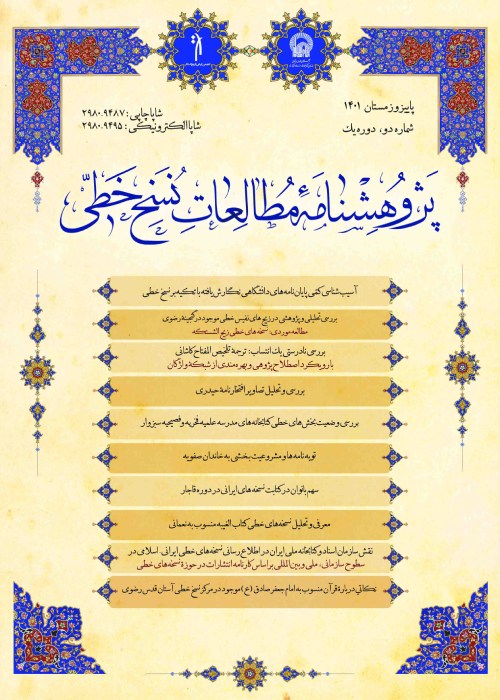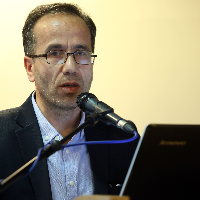Analytical Review and Introduction of the Islamic Manuscripts of Austrian National Library: Case Study of Qur’anic Manuscripts in Franz Loibl’s Collection
Study of the Qur’anic manuscripts of Franz Loibl's collection donated to Austrian National Library and delineating their most outstanding codicology components.
Research Methods/Approach:
It has been done by a survey method and with a descriptive and analytical approach. In this research, from among Franz Loibl’s donated collection to Austrian National Library, 73 manuscripts in general, and 17 Qur’anic manuscripts (23% of all) in detail, whose process of registration, pest control, restoration, and maintenance has been completed, were examined.
With 3762 Islamic manuscripts, Austria ranks 8th in European Union and 43rd in the World. From the 73 titles of the Islamic manuscripts of Loibl’s collection, in order of frequency, 29 titles are on the subject of religion (Islam), 29 titles are on the subject of literature, 10 are on the subject of humanities, three are on the subject of religion (Christianity) and two are on the subject of practical and technical sciences. Qur’an, with 17 titles/copies (23.28%) comprises the largest share in Loibl’s collection. Of the 17 Qur’ans studied, 13 are complete copies, and 4 copies are only a part (juz’) of the Qur’an. There are also three complete Qur’ans with Persian translation. The book design’s style/school of 8 copies is Ottomanic, 6 copies Kashmiri, 2 transoxanian, and 1 Timurid. The text of all the Qur’an copies is written in Naskh script. The transcribing situation of 50 percent is distinct due to having a colophon. Most of the Qur’an copies were transcribed in Ottoman, Afghanistan and probably in Bukhara in the 13th/18th century. All Qur’an copies are illuminated, in which various types of adornments are used. More than 50 percent of the copies of the Qur’an have margins. About 50 percent have endowment, possession and family notes. Farangī and Bukhārā’ī paper sheets are ranked as first and second. The layout of 7 copies (41%) is 15 lines. Most of the damage is due to frequent use and water damage. All the covers are illuminated and most of them are medium octavo and royal octavo in book size. In general, 49 titles (67 percent) of the Loibl’s collection have ornaments, miniatures, images, and numerous art adornments.Identifying the Qur’anic Manuscripts aboard is helpful in developing codicology discourses. Compiling developed and detailed standardized structured catalogs, especially for Qur’anic manuscripts by Iranian expert catalogers and translating these manuscripts, as a rich Iranian and Islamic identity and civilization, into the language of the countries holding their ownership would result in promotion and development of Islamic-Iranian studies and prompt a multidimensional cultural, artistic, and civilizational diplomacy.
- حق عضویت دریافتی صرف حمایت از نشریات عضو و نگهداری، تکمیل و توسعه مگیران میشود.
- پرداخت حق اشتراک و دانلود مقالات اجازه بازنشر آن در سایر رسانههای چاپی و دیجیتال را به کاربر نمیدهد.



